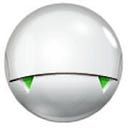神经细胞是一种非常具有特殊地位的细胞:
近 20 年来,神经科学界普遍认为,人或其他哺乳动物在生长过程中,大脑中会有很多新细胞生成进行补充,成年人的海马体区域每天约有数百个神经发生(neurogenesis),即细胞生成。这一观点在学术圈内被广泛接纳,并被运用到记忆、情绪紊乱等相关疾病的治疗上。然而,这一理论如今被推翻:随着人类成长,海马区神经发生急剧减少,成年后不再有新的神经细胞生成。
神经细胞的实际数量从婴儿一岁以后,直至七八十岁,一直保持不变,但细胞之间的联结却是不断增加的。人类肌体含有大约500亿个神经元,而大脑就占据其中的五分之一。这些神经细胞的形状就像变压器和它外部的电线,是由细胞体以及其外部纤维组成的。它们通过纤维互相连接,传递信息。神经细胞的数量在出生时就已经确定。神经系统的发育一般持续到25岁,它不再产生新的神经元,而是表现在神经元之间联系的增加和复杂化上面
科学家发现,成年大鼠每天可产生上千个脑细胞,人类以及其他灵长类动物每天生产细胞数量还要少于这个数字。但是,这些新生脑细胞大部分都会死亡,除非努力学习新的知识。这些新生细胞无法弥补死亡的细胞。因此,人类脑细胞仍然是处于一个不断减少的过程。这个过程持续终身,25岁左右开始对正常生活产生影响,27岁开始所有能力走下坡路。到了80岁,脑细胞减少了一半左右,这已经被科学所证实。另外,核磁成像告诉我们大脑总体积从18岁就开始减少,在18–60岁的几年中,大脑灰质逐渐减少,白质45岁之前缓慢增加,之后减少
In most cases, neurons are generated by special types of stem cells during brain development and childhood. Neurons in the adult brain generally do not undergo cell division. Astrocytes are star-shaped glial cells that have also been observed to turn into neurons by virtue of the stem cell characteristic pluripotency. Neurogenesis largely ceases during adulthood in most areas of the brain. However, there is strong evidence for generation of substantial numbers of new neurons in two brain areas, the hippocampus and olfactory bulb.
研究细胞类型转换机制的这一领域被称为 Transdifferentiation:
Transdifferentiation is an alternative to the cellular reprogramming that involves converting a mature cell into a pluripotent stem cell – one capable of becoming many types of cell – then coaxing the pluripotent cell into becoming a particular type of cell, such as neurons
